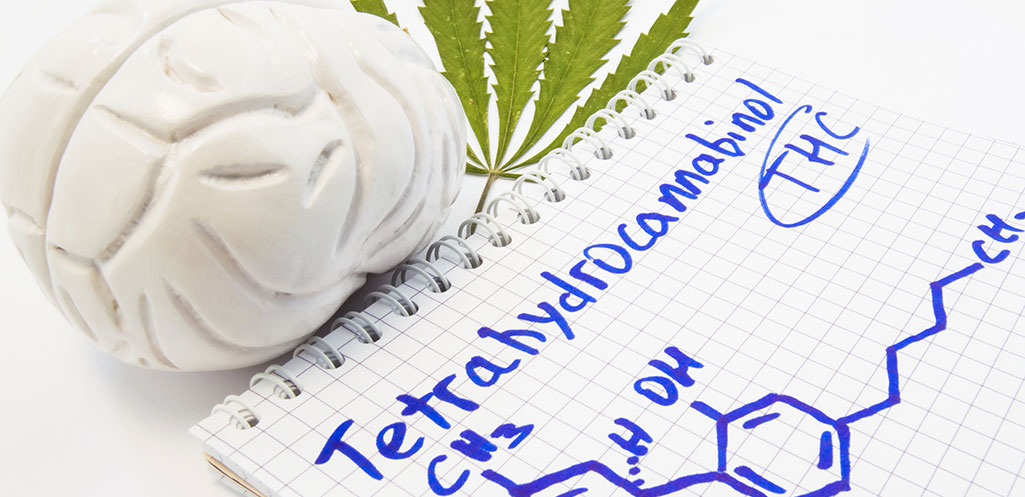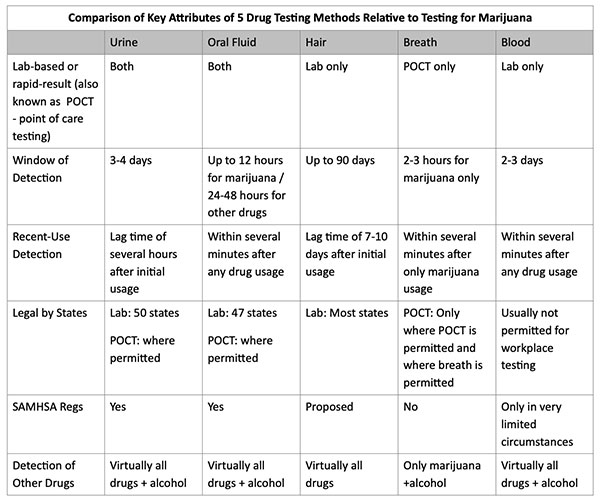
SPONSORED
The Truth About Marijuana Impairment & Recent-Use Drug Testing
This information is provided for educational purposes only. Reader retains full responsibility for the use of the information contained herein.
- By Bill Current
- Apr 19, 2022
Marijuana impairment, and particularly how long impairment lasts, is often misunderstood, primarily because advocates for marijuana typically present data from available studies within a narrow scope that aligns with their position. However, one study attempted to review findings from many different studies to present an unbiased evaluation of marijuana-induced impairment and the duration of impairment. It turns out there are many factors that impact impairment.
A landmark report. A report from the University of Sydney published in Neuroscience & Biobehavioral Reviews, analyzed 80 separate studies to determine when people would be impaired after cannabis use. “Depending on how much THC is taken, how it’s taken, and the person taking it, they found cognitive impairment could last between three and 10 hours.”
The report also stated: “Our analysis indicates that impairment may last up to 10 hours if high doses of THC are consumed orally. A more typical duration of impairment, however, is four hours, when lower doses of THC are consumed via smoking or vaporization and simpler tasks are undertaken (e.g., those using cognitive skills such as reaction time, sustained attention and working memory).”
“This impairment may extend up to six or seven hours if higher doses of THC are inhaled and complex tasks, such as driving, are assessed.”
And what about heavy users vs. occasional users? “We found that impairment is much more predictable in occasional cannabis users than regular cannabis users. Heavy users show significant tolerance to the effects of cannabis on driving and cognitive function, while typically displaying some impairment.”
How marijuana is consumed affects impairment. “Additionally, the length and intensity of intoxication [not impairment] depends not only on the strength of the marijuana product, but also on how the drug is consumed. Inhaling marijuana typically causes onset of intoxication within five minutes, with symptoms of intoxication lasting a couple of hours. On the other hand, ingesting marijuana (e.g., “special brownies”) can delay onset of intoxication between one to four hours, and intoxication can last much longer than that.”
Impairment duration & common tasks. Other studies have likewise concluded that the duration of marijuana impairment varies significantly depending on a variety of factors. An often cited report by the National Highway Traffic Safety Administration (NHTSA) provides some clarification. Here is the part referred to by some pro-marijuana folks: “Effects from smoking cannabis products are felt within minutes and reach their peak in 10-30 minutes. Typical marijuana smokers experience a high that lasts approximately 2 hours.”
What is often not mentioned is the following: “Most behavioral and physiological effects return to baseline levels within 3-5 hours after drug use, although some investigators have demonstrated residual effects in specific behaviors up to 24 hours, such as complex divided attention tasks.
Intoxication (or feeling high) is different than impairment. “Psychomotor impairment can persist after the perceived high has dissipated. In long-term users, even after periods of abstinence, selective attention (ability to filter out irrelevant information) has been shown to be adversely affected with increasing duration of use, and speed of information processing has been shown to be impaired with increasing frequency of use.”
The truth is there is no such thing as a “window of peak impairment” because, as numerous studies have found, there are many different factors that influence how someone becomes impaired by marijuana use and for how long. This brings us to the subject of drug testing for marijuana. It is important to note that while no drug testing method can prove, either legally or scientifically, that a person is impaired, most testing methods can prove that someone has been using marijuana and has marijuana in their system while at work.
The following table provides a brief review of several key attributes of five drug testing methods.

As the table indicates, of the three drug testing methods endorsed by SAMHSA, only lab-based oral fluid testing is capable of detecting recent use of marijuana and is legal in virtually every state.
So, if impairment can last for 10 or more hours, a drug testing method with the ability to detect recent use of marijuana (within minutes of usage) with a window of detection of at least 10 hours will meet an employer’s dual priorities of testing to: 1) keep the workplace safe from the ill-effects of marijuana-impaired workers, and 2) not pry too far back into the private behavior of its employees.
The following graphic shows the window of detection for marijuana for urine, oral fluid and breath over a 10-hour window of impairment. (Note: the window of detection for hair testing is not shown because drugs are not detectable in hair for 7-10 days after consumption.)

As the graphic demonstrates, marijuana becomes detectable in oral fluid and breath almost immediately after it is absorbed into the body. Oral fluid is generated primarily by excretion of saliva, a fluid that originates from the blood. Thus, saliva contains in real time, whatever drug/metabolite is present in the bloodstream. This makes it scientifically possible to refer to oral fluid testing as a true recent-use detection drug testing method, which makes it ideal for use in states that have legalized marijuana, especially for random, post-accident, reasonable suspicion, fitness-for-duty, and pre-employment drug testing situations. In contrast, urine tests detect THC metabolite and are generally not positive for metabolites for several hours after use.
Additionally, the window of detection in oral fluid for marijuana covers the entire window of impairment of 10 hours or longer. A drug testing method with a much shorter window of detection of 2-3 hours, for example, breath, will make it possible for many marijuana-impaired workers to go undetected through drug testing. In other words, oral fluid testing will produce positive drug test results for more people who are actually impaired by marijuana on the job than breath, and it will also produce positives for all the other commonly abused and impairing drugs such as opioids, amphetamines, heroin and cocaine.
The truth about marijuana impairment and an accurate understanding about the duration of such impairment help employers choose a drug testing method that can truly meet their needs. Oral fluid testing helps employers accomplish the overall objectives of establishing and maintaining a drug-free workplace program, including accurately identifying people who recently used marijuana and who are still impaired several hours later even though the high has worn off and the person doesn’t think they are still impaired
Conclusion
Here’s what we know:
- Substance abuse in the United States is up dramatically, thanks in large part to the skyrocketing levels of marijuana use.
- Workplace positive drug test results for marijuana are also up dramatically, especially in states that have legalized recreational marijuana use. According to the latest Drug Testing Index from Quest Diagnostics, in the U.S. general workforce, marijuana positivity increased 16.1 percent in urine testing (3.1% in 2019 versus 3.6% in 2020), 35.2 percent in oral fluid testing (9.1% in 2019 versus 12.3% in 2020) and 22.5 percent in hair testing (7.1% in 2019 versus 8.7% in 2020).
- While a positive drug test result for marijuana may not prove a person is impaired, it proves they have the drug in their system, and they could be impaired.
- Impairment is affected by several factors, including how much marijuana is consumed, how it is consumed, the potency of the THC, and the frequency of use by the employee.
- Marijuana-induced impairment can last for many hours after intoxication or the “high” has worn off (in other words, the user may not feel high anymore, but could still be impaired).
- NHTSA reported that “levels of THC do not closely correlate to the degree of impairment – and that often peak impairment occurs when THC levels have already begun to decline.”
- Lab-based oral fluid testing is the only recent-use detection method endorsed by the federal government, thus providing employers with a blueprint for success and the highest possible level of legal defensibility, which is especially important in marijuana-friendly states.
Workplace drug testing is here to stay. Testing applicants and employees for marijuana, especially those in safety-sensitive positions, is permitted in all 50 states. Employers still have the right to prohibit workers from using marijuana while on the job, bringing marijuana into the workplace, and being at work impaired by marijuana.
Choosing the right drug testing method will be influenced by a company’s drug testing objectives. While there are several good drug testing methods available today, the best advice for employers is to make an educated choice.